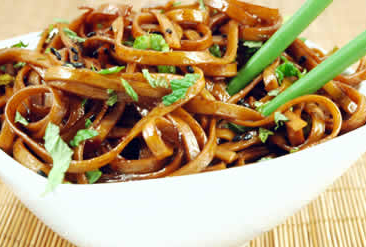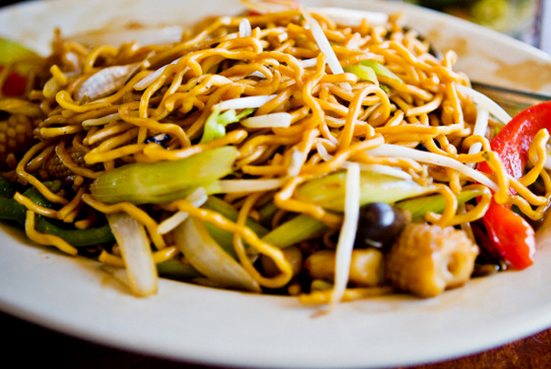The notions and principles of eTourism and e-commerce become closely connected while referring to the use of social media platforms for different marketing projects. The effectively developed social media strategy provides the framework for completing the project’s goals with the help of social media platforms.
The social media strategy report on virtual tourism includes the project’s goal, such strategy’s components as the positioning, slogan, the discussion of the target audience, social media platforms, strategy of media, content, tone of voice, the discussion of used digital marketing theory and models, and metrics for success.
Project Goal
The main goal of the project is to promote virtual food tourism with the focus on the Chinese culinary traditions for people from all over the world while supporting Chinese restaurants brands.
Strategy
Positioning
Food lovers from all over the world receive the opportunity to enjoy virtual food tourism in relation to the Chinese culinary traditions.
Slogan
“Fall in love with a city because of a city”.
Target Audience
The target audience of the project is males and females aged 18-35, interested in the aspects of the food tourism, the Chinese culinary traditions, the Chinese culture, visiting Chinese restaurants in China, in Britain, and all over the globe.
Social Media Platforms
Effective tools to communicate personally with the potential consumer.
- To develop a group related to the project and connecting the lovers of the Chinese food and travelling.
- To allow posting photographs and information about the local Chinese restaurants, food destinations in China and globally.


- To support a forum to discuss the best Chinese food destinations in the world.
YouTube
- To promote the city video guide related to the Chinese culinary traditions and food destinations in different cities of China.

- To support the video guide about the history of Chinese culinary traditions.
- To promote posting photographs and personal feedbacks on Chinese restaurants in Chinese cities and round the globe.
- To promote posting information about new Chinese restaurants in China and round the globe.
Content Types
Posts, photographs, questions, interviews, news items, multimedia, walking tours.
Tone of voice
Light-hearted and humorous.
Digital Marketing Theory and Models
The main project uses the traditional digital marketing theory the main principles of which state the necessity of presenting the products and services virtually, involving the principles of the e-commerce, sharing the information, community building, and the direct contacts with consumers (Buhalis, Tjoa, & Jafari 1998, p. 78).
The successful functioning of the project depends on stating the appropriate connections between different social media channels (Vries, Gensler, & Leeflang 2012, p. 84).
Facebook groups should be connected with the Twitter accounts and YouTube channels in order to provide the consumer with the opportunity to be re-directed to the materials which are most interesting and appropriate (Saravanakumar & SuganthaLakshmi 2012, p. 4445).
The basic used models include the manipulation of the shared and posted content, the focus on the posts promoting brands, and the focus on providing the effective customer services in relation to the virtual tourism (Buhalis 2003, p. 58; Buhalis & Schertler 1999, p. 84).
Such social media platforms as Facebook and YouTube can provide the effective tools to attract the lovers of the Chinese food and people interested in food tourism in order to promote the idea of virtual food tourism among them (Fesenmaier, Klein, & Buhalis 2000, p. 89; Fesenmaier, Werthner, & Wober 2006, p. 18).
The main focus is on the updated posts, commentaries, city video guides, photo posts, and descriptions of the most popular Chinese restaurants. Twitter provides the opportunity to post the immediate information, news, update units, and commentaries.
Metrics for Success
The metrics for success in relation to the project are associated with the focus on promoting the consumers’ awareness in relation to the project. To analyse the metrics for success in relation to using the discussed social media platforms, it is necessary to refer to the websites’ traffic (Hanna, Rohm, & Crittenden 201, p. 265).
The other important measures are the number of subscribers and followers, and the general level of the audience’s activity and insights (Anderson 2010, p. 112; Egger & Buhalis 2008, p. 45).
Reflection
The use of the virtual space for promoting the idea of fool tourism and brand awareness is the comparably new approach in the field of eToursim and marketing.
To develop the effective social media strategy related to promoting the project, it is necessary to select the most appropriate social platforms, to develop the strategies for using the provided tools, and to develop approaches to address the consumers depending on the used social platform and content types.
The main challenge is in proposing the content which can satisfy the audience’s needs and work to support the concrete business goals. As a result, it is necessary to find the balance between focusing on the customers’ interests and experience and brand and project promotion.
Reference List
Anderson, E 2010, Social media marketing: Game theory and the emergence of collaboration, Springer, USA.
Buhalis, D, 2003, eTourism: Information Technology for strategic tourism management, Pearson, UK.
Buhalis, D & Schertler, W 1999, Information and Communication Technologies in tourism, ENTER’99, Springer-Verlag, New York.
Buhalis, D, Tjoa, A, & Jafari, J 1998, Information and Communication Technologies in tourism, ENTER’98 Conference Proceedings, Istanbul, Springer-Verlag, New York.
Egger, R & Buhalis, D 2008, eTourism case studies: Management & marketing issues in eTourism, Butterworth Heinemann Oxford, UK.
Fesenmaier, D, Klein, S, & Buhalis, D 2000, Information & Communication Technologies in tourism, ENTER’2000, Springer-Verlag, New York.
Fesenmaier, D, Werthner, H, & Wober, K 2006, Destination recommendation systems: Behavioural foundations and applications, CABI, London.
Hanna, R, Rohm, A, & Crittenden, V 2011, ‘We’re all connected: The power of the social media ecosystem’, Business Horizons, vol. 54, no. 1, pp. 265-273.
Saravanakumar, M & SuganthaLakshmi, T 2012, ‘Social media marketing’, Life Science Journal, vol. 9, no. 4, pp. 4444-4451.
Vries, L, Gensler, S, & Leeflang, P 2012, ‘Popularity of brand posts on brand fan pages: An investigation of the effects of social media marketing’, Journal of Interactive Marketing, vol. 26, no. 1, pp. 83-91.